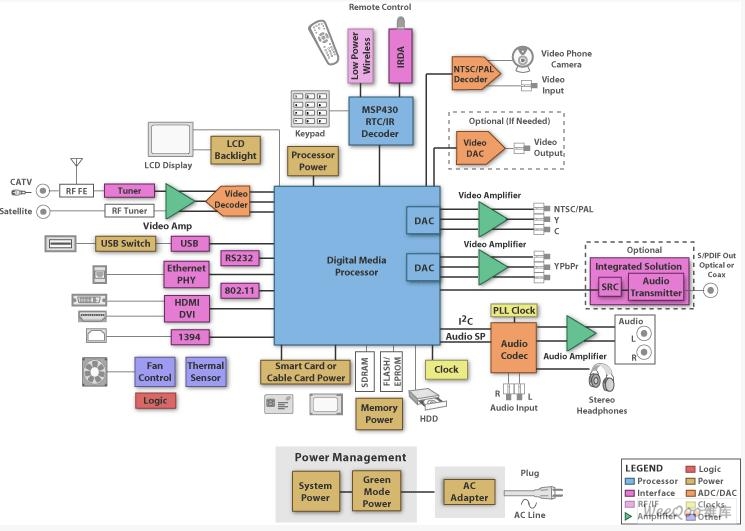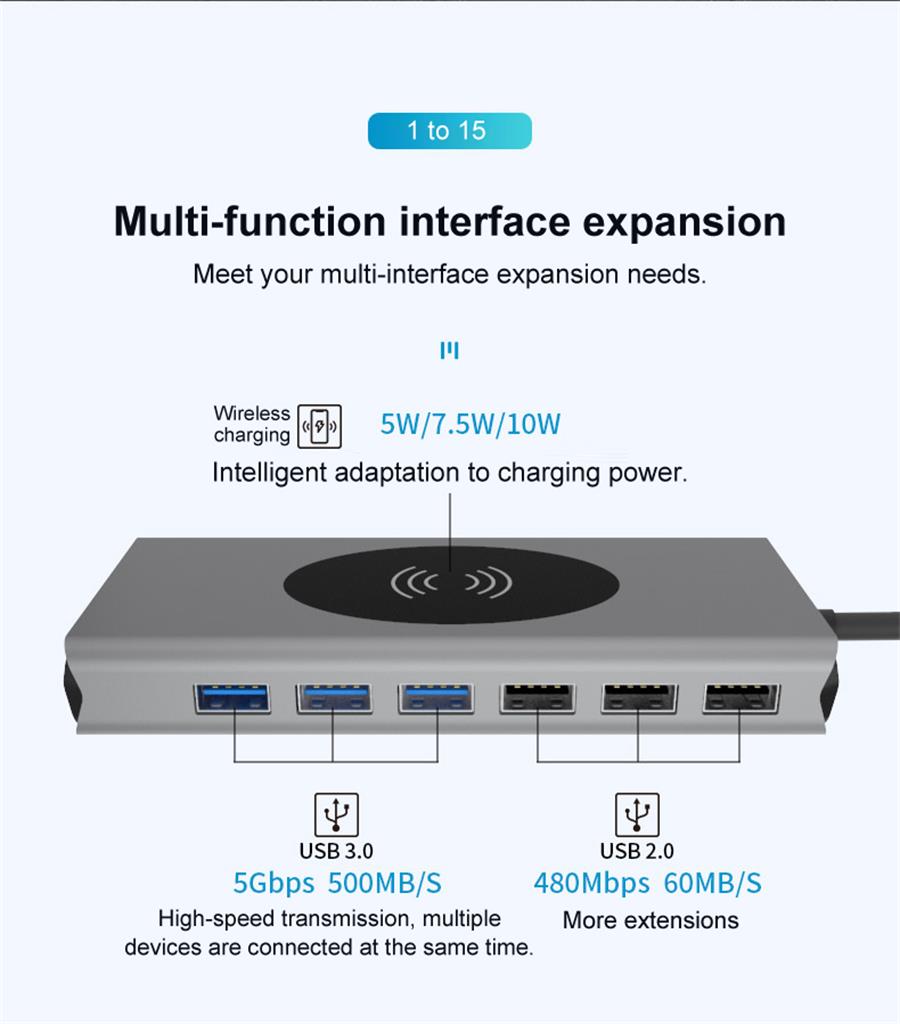Connect to a TV and an external source to convert the signal to something that can be displayed on the TV screen. With the addition of a hard disk drive (HDD), the set-top box solution also enables support for PVR (Personal Video Recorder) functions. This article will detail the STB's kernel subsystem design.
Design considerations
A digital set-top box (STB) is connected to the TV and an external source to convert the signal into content that can be displayed on the TV screen. With the addition of a hard disk drive (HDD), the set-top box solution also enables support for PVR (Personal Video Recorder) functions. A common stand-alone component called TiVo is an example of a PVR. Like many home electronic terminal devices, remote control is an important component of a complete system. Many consumer products are beginning to take advantage of RF remote control with TI's leading RF4CE solution. These devices depend on the remote control and the low-power RF chip and microprocessor on the STB.
In general, digital STB (PVR) can be divided into several main components; digital media processors, audio decoding and processing, video decoding and processing, tuner, audio and video output, IrDA or LPW remote control, various interfaces and power supplies. TI's product line has introduced many integrated circuits that deliver the expected performance levels. Leveraging high-performance audio-video codecs, graphics acceleration, communications, and support is essential for integrated applications in the home entertainment experience.

TI digital set-top box kernel subsystem block diagram
The kernel subsystem includes:
Digital Media Processors – TI's digital media processors can handle decoding, transcoding/encoding (converting from one format to another) and converting various media streams (shifting higher bit rates to lower levels) Complex processing functions such as bit rate), and system-level functions such as decryption, encryption, packetization, and media stream transmission. In addition to broadcast content, TI-based set-top boxes can seamlessly support content from home networks or directly from the Internet. TI's fully programmable devices enable fast compatibility with new codec technology (used by all Internet sites or PCs), including future versions not anticipated in product design. TI's media processor family is software-compatible, which means software investment can be reused from SD boxes to HD boxes to other products, reducing development time and costs.
Radio Frequency Demodulation - COFDM/QAM/QPSK/ATSC demodulation, forward error correction (FEC) and video demultiplexing.
The MSP430 microprocessor in the MCU-STB is very versatile and can be used for control and application of multiple different operating modes, from managing interfaces connected to remote control to managing all aspects of STB component power consumption. The MSP430 extends the battery life of the remote control, significantly reducing the power consumption of the STB, regardless of the operating mode, while adding little to the complexity of the system.
Video Interface - Select the video source that is decoded/encoded by the ADC/DAC and DSP. Both the video front end and the output stage require a high performance op amp to amplify the video signal. For the terminal device, it is important to support multiple ATSC DTV formats, NTSC/PAL, composite video and S-video. Once HDTV becomes the mainstream standard, products that support 1080p full HD resolution with 3D adaptive filtering will be everywhere.
Audio Interface - Allows audio to be digitized by the audio converter and processed by the DSP to provide high quality audio for MPEG/AC3 needs. The audio is also converted back to analog format and then played back through the stereo output jack for stereo headphones. High-quality audio output is guaranteed with high SNR (signal-to-noise ratio) and analog low-pass filtering.
User Interface – Enables users to control video/audio I/O sources while communicating with the system network. The user interface also includes connections to remote controls via IrDA or low power wireless devices residing on the components themselves and the remote control components.
Broadband and wireless connectivity - Allows interactive TV, gaming, streaming audio and video, Voice over IP (VoIP) and video telephony to be sent and received via ADSL, cable modem and 802.11 interfaces.
Power Conversion – Contains AC to DC conversion for the main power supply of the component itself, almost all functional blocks in the STB require a special power solution; core and I/O power for the host processor, DDR memory, and tuner Power and video/analog signal chain. However, in this era of energy conservation, the government has continued to enact new policies on standby power consumption and consumer product efficiency and to strengthen the implementation of existing programs. Almost all current programs that regulate STB are voluntary, but enforcement of mandatory requirements is imminent.
:
Information technology has penetrated into all areas of our lives. With the progress of technology, the iteration rate of laptops is getting faster and faster. Previous laptops mainly used E-SATA, FireWire, VGA, DisplayPort, SD card slot, USB A, 3.5mm headphone jack, HDMI or RJ45 ports.But manufacturers began stripping connectors from laptops to make them thinner and lighter. Most new laptops now have a USBC port (Thunderbolt or full-featured USBC) and an audio jack. The laptop is thin, but the missing ports are useless. This is where the USB C Hubs comes in.
Type C Usb Hub can support USB, PD, DisplayPort, Thunderbolt, and other protocols. Using USB HUBS, you can extend multiple common connectors directly to your laptop. Mosses are compact, so you can take them anywhere. All peripheral devices are centrally connected to the hub, which reduces the hassle of plugging in and out of the laptop port and makes your desktop cleaner. Let's take a closer look at its capabilities so you can determine how many ports you need.
So these are all important ports on the hub, with the exception of the 3.5mm audio jack. Also, while aesthetics are not important, choosing a nice hub will make you happier. There are rectangular, square, and circular centers on the market to meet your desk setup needs. Usually, the rectangular type is best for your desk because the cables can be well organized if all the ports are on one side of the center.

Usb C Hubs,4 Port Usb C Hub,Usb C Multiport Hub,Usb Hub With Hdmi Port
Henan Yijiao Trading Co., Ltd , https://www.yjusbcable.com